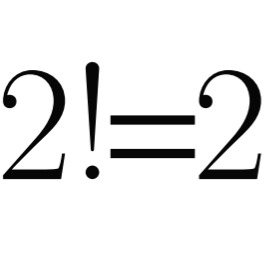논리학, 그 여섯 번째 이야기 | 여러 가지 추론 규칙 ( Various Inference Rules )
이번 글에서는 여러 가지 추론 규칙에 대해 다룰 것이다. 긴말하지 않고 바로 본론으로 들어가자.
Inference Rules
1. 이중부정의 제거 (Double Negation Elimination; DNE) 2. 이중부정의 도입 (Double Negation Introduction; DNI) 3. 대우법칙 (Equivalence of Contrapositives; Contrapositives) 4. 가언적 삼단논법 (Hypothetical Syllogism; HS) 5. 선언적 삼단논법 (Disjunctive Syllogism; DS) 6. 연언 소거 (Conjunction Elimination; CE) 7. 연언 도입 (Conjunction Introduction; CI) 8. 선언 소거 (Disjunction Elimination; DE) 9. 선언 도입 (Disjunction Introduction; DI) 10. 전건 긍정 (Modus Ponens; MP) 11. 후건 부정 (Modus Tollens; MT) |
Proof.
증명은 다음과 같다.
[1], [2] 이 둘은 이 글에서 증명하였다.
[3] 이는 이 글에서 증명하였다.
[4] 이는 이 글에서 증명하였다.
[5]
[6]
따라서
이제
따라서
[7]
따라서
따라서
[8]
따라서
[9]
따라서
일단,
[10] 이는 이 글에서 언급한 것과 같이 명제논리에서는 증명 없이 받아들인다.
[11] 이는 다음과 같이 증명할 수 있다.
앞으로 위의 추론규칙들은 자주 쓰일 것이다. 또한, 위의 추론규칙들을 통해 아래의 몇 가지 따름정리들을 얻을 수 있다.
Corollary 1.
1. 배중률 (Law of Excluded Middle) 2. 논리합의 교환법칙 (Commutative Law of Disjunction) 3. 논리합의 결합법칙 (Associative Law of Disjunction) 4. 논리곱의 교환법칙 (Commutative Law of Conjunction) 5. 논리곱의 결합법칙 (Associative Law of Conjunction) 6. 분배법칙 (Distributive Law) 7. 드 모르간의 법칙 (De Morgan's Laws) 8. 폭발 원리 (Principle of Explosion; 9. 공허 참 (Vacuosly Truth) |
이에 대한 증명은 비교적 자명하므로 굳이 서술하지는 않겠다. 만약 명제논리에 익숙하지 않다면 연습문제 삼아 직접 증명해보는 것도 좋을 것이다. 또한, 논리합과 논리곱의 결합법칙으로부터 연산의 순서가 중요하지 않다는 사실을 알 수 있다. 따라서 3개 이상의 wff에 논리합 연산 또는 논리곱 연산을 적용할 때에는
'수학 > 논리학 | Mathematical Logic' 카테고리의 다른 글








